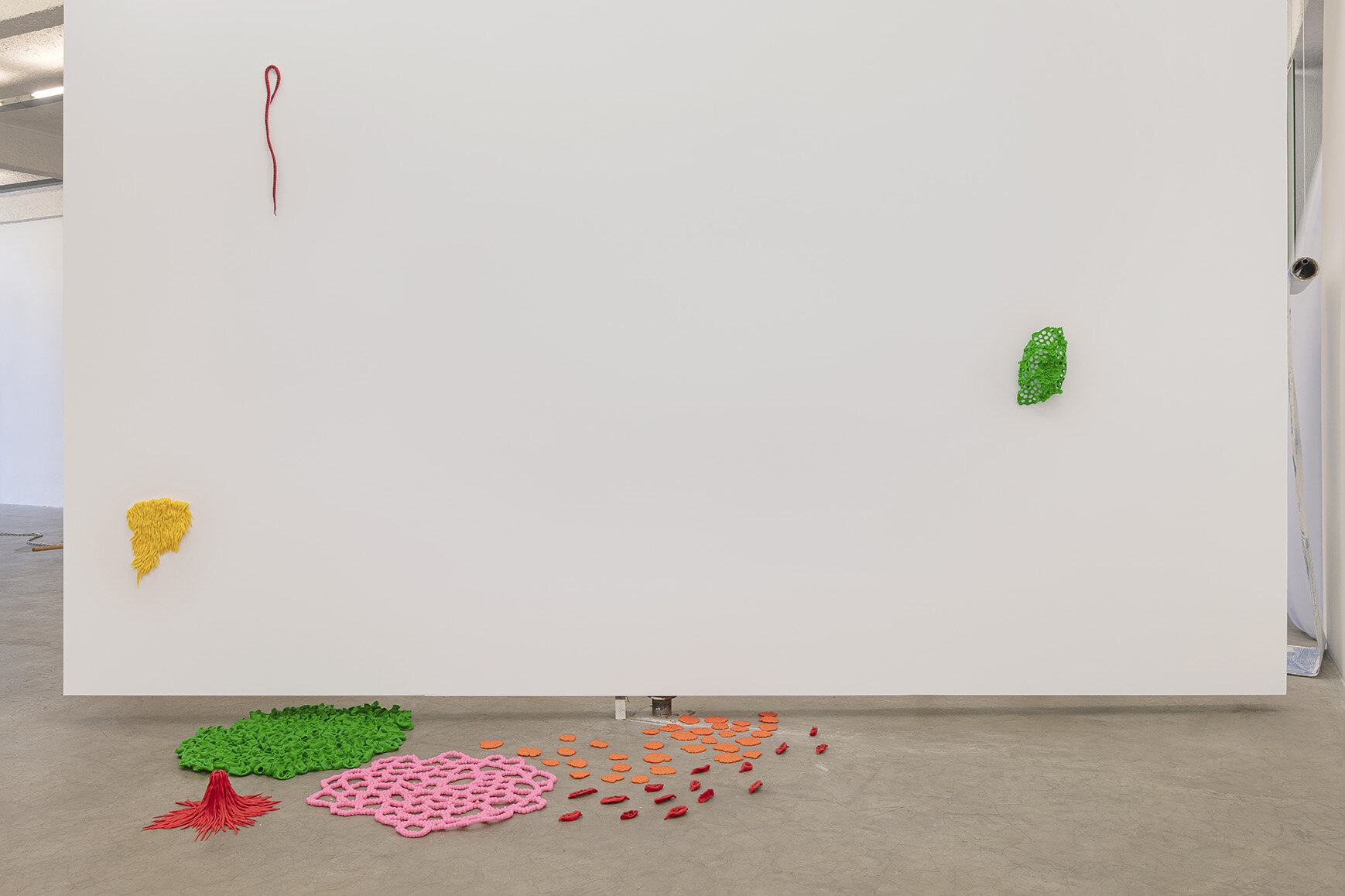Últimos Dias
12 a 28/11/2020
Visitação por agendamento
visiting by appointment:
residenciafonte@gmail.com
@residenciafonte
no FONTE
Rua Mourato Coelho, 751
Vila Madalena
Realização:
Hermes Artes Visuais
Faça o download do Release aqui.
Entre 2019 e 2020, o grupo de segunda-feira do Hermes Artes Visuais se encontrou para conversar a respeito dos trabalhos de arte que seus integrantes criavam, mas também para ler e discutir sobre arte. Dentre as leituras estava o livro “Bad New Days”, do crítico de arte e historiador estadunidense Hal Foster. Lançou-se a proposição de criar trabalhos ou ainda ler os trabalhos que iam se apresentando sob a chave da precariedade, assunto de um dos capítulos do livro. No texto, o autor comenta sobre produções que não apenas mimetizam o precário, mas que também apontam para questões que são próprias de uma mudança histórica mundial recente e que afeta a todos. Vivemos em um sistema econômico que retira propositalmente os direitos da população:
"O Oxford English Dictionary nos informa que o precário deriva “do latim precarius, obtido por petição, dependendo do favor de outro, daí incerto, precário, derivado de precem, oração”. Essa definição ressalta que esse estado de insegurança é construído, projetado por um regime de poder de quem o precariado depende de favor e que só pode pedir ajuda."
“Últimos dias” é resultado de um processo coletivo. A exposição que já tinha nome e abertura marcada para março foi adiada algumas vezes por conta da pandemia. Nesse meio tempo, com todas as mudanças provocadas pelo vírus, questões que antes pareciam um tanto abstratas se colocaram nítidas e presentes: o assunto, ao invés de perder interesse, se tornou mais pertinente. Infelizmente são diversas áreas sofrendo uma orquestrada deterioração, desde campos fundamentais como a saúde, educação, saneamento básico, meio-ambiente até questões no âmbito da cultura. Destaca-se a precarização que os trabalhadores sofrem paulatinamente, perdendo seus direitos, aí inclusos os artistas, como intelectuais precários, que atuam sem sequer contar com o reconhecimento de suas práticas como trabalho.
Além disso, o golpe inesperado que tomou todos os planos e a experiência do isolamento inevitavelmente atravessaram os artistas e podem ser vistas nos trabalhos. A precariedade aqui tratada é, portanto, um assunto que se expande e pode estar na efemeridade, na condição transitória, fugaz e pouco confiável da vida na contemporaneidade.
Contando com trabalhos em diversas linguagens, pintura, vídeo, fotografia e objetos, é possível perceber na exposição o recorrente uso da palavra e a torção dos seus sentidos. O próprio título “Últimos dias” tem um tom ao mesmo tempo publicitário e apocalíptico, se refere ao estranho ano de 2020 e ainda se liga ao título do livro que serviu de disparo para estas explorações.
english version:
Between 2019 and 2020, the Monday group of the Hermes Visual Arts independent space met in order to talk about the art projects its members were working on, but, also, to discuss and read about art. One of the books read by the group was Bad New Days, by the American art critic and historian Hal Foster. Therefore, it was proposed to create new projects or even read the works that were presented, under the sign of precarity, theme of one of the chapters of the book. In the text, the author makes comments on productions that not only mime the precarious, but that also point toward questions that are themselves characteristic of a historical global change that affects us all. We live under an economical system that intentionally deprives the population of its rights:
The Oxford English Dictionary informs us that precarious derives “from the Latin precarius, obtained by entreaty, depending on the favor of another, hence uncertain, precarious from precem, prayer.” This definition underscores that this state of insecurity is a constructed one, engineered by a regime of power that the precariat depends on for favor and that it can only petition for help. (FOSTER, 2017, p. 135)
“Last days” is the result of a collective process. The exposition, that already had a name and the vernissage scheduled to march, was postponed a few times due to the pandemic. In the meantime, with all the changes caused by the virus, situations that seemed abstract became clear and present: instead of vanishing, the subject became even more pertinent. Unfortunately, several areas are suffering a deterioration that had been orchestrated beforehand, from fundamental areas, like heath, education, sewage disposal and environment to culture and arts. It is paramount to highlight the precariousness that working people suffer gradually, losing their rights, artists included, as precarious intellectuals that act regardlessly, without even being able to count with their praxis recognized as work.
Beyond all this, the unexpected coup, that destroyed all plans, and the experience of isolation, inevitably, crossed the artists and can be seen on their work. The precarity we talk about here is, thus, a subject that grows and might lie on the ephemeral, on the transitory condition, fleeting and unreliable, of life in contemporaneity.
With works that encompass different languages, painting, video, photography and objects, it is possible to perceive the recurrent use of the word “torsion” and its meanings. The title itself, “Last days”, that sounds, at the same time, as an advertising or as an announcement of the apocalypse, refers both to the peculiar year 2020 and to the title of the book that triggered the exposition.
{ FICHA TÉCNICA | datasheet }
Artistas participantes/
participating artists:
Adriano Franchini, Clóvis Teodorico, Corina Ishikura, Debora Rayel Eva, Diego Marcicano, Fefa Lins, Fernanda Isola, Guilherme Borsatto, Gustavo Aragoni, Jamila Maria, Jussara Marangoni, Lorena Bernardes, Marcelo Barros, Mari Nagem, Maria Luíza Mazzetto, Roberto Unter, Tomie Savaget, Marcia Morelli
Organização/
organization:
Marcelo Amorim































